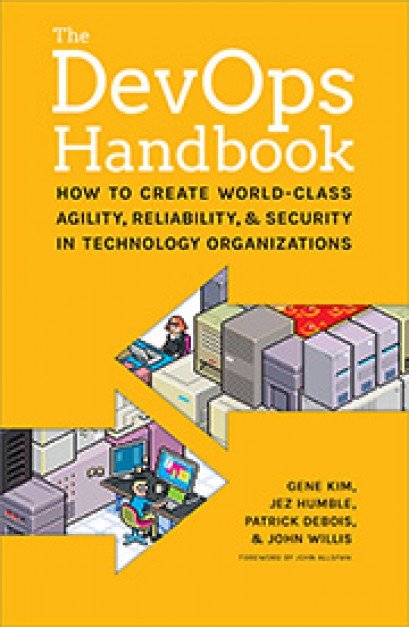9 August 2023

In the ever-evolving world of technology, serverless computing has emerged as a game-changing paradigm that is transforming the way we build and deploy applications. This revolutionary approach allows developers to focus solely on writing code without the hassle of managing servers, infrastructure, and scaling. Serverless computing has gained significant popularity in recent years, enabling businesses to improve agility, reduce costs, and accelerate time-to-market for their applications.
Serverless computing is an approach to delivering backend services in a pay-as-you-go manner, where resources are allocated dynamically based on usage (Cloudflare, 2023). A serverless provider abstracts away the infrastructure management, allowing developers to focus solely on writing code in the form of functions (Cloudflare, 2023). A company that acquires backend services from a serverless provider incurs charges based on their computational needs without the obligation to prepay or allocate a fixed amount of network capacity or server resources (Cloudflare, 2023). This is made possible by the service's automatic scaling capabilities, adapting to the company's usage patterns (Cloudflare, 2023). These functions are event-driven and executed in a stateless manner, triggered by specific events or requests. The underlying infrastructure, including server provisioning, scaling, and maintenance, is handled automatically by the cloud provider (Microsoft, 2023). Note that contrary to its name, serverless computing doesn't mean there are no servers involved (Cloudflare, 2023).
Scalability: One of the most significant advantages of serverless computing is its ability to scale automatically based on the application's needs (Cloudflare, 2023). With traditional server-based architectures, scaling can be complex and time-consuming. In serverless, the cloud provider handles the scaling for you, ensuring optimal performance during peak loads and saving costs during periods of low demand (Cloudflare, 2023). Cost-efficiency: Serverless computing follows a pay-per-use model, where you are billed only for the actual execution time of your functions (Cloudflare, 2023). This eliminates the need to pay for idle server resources, resulting in cost savings for businesses. Additionally, serverless architectures reduce the operational costs associated with infrastructure management, such as provisioning, monitoring, and patching (Cloudflare, 2023). Increased developer productivity: By abstracting away server management, serverless computing allows developers to focus on writing code and delivering business value (LinkedIn Corporation, 2023). It enables faster development cycles and promotes agility, as developers can iterate and deploy new features more quickly (LinkedIn Corporation, 2023). The serverless ecosystem also provides a wide range of pre-built services and integrations, reducing the need for developers to reinvent the wheel (Amazon Web Services, 2023). Improved reliability and fault tolerance: Serverless platforms inherently provide built-in fault tolerance and high availability (dashbird, 2023). With the automatic scaling and distributed nature of serverless architectures, applications can handle sudden spikes in traffic without worrying about infrastructure failures (Spiceworks Inc, 2023). Cloud providers manage the underlying infrastructure redundancies and replication, ensuring robustness for your applications.
While serverless computing offers numerous advantages, it's important to consider some challenges and considerations: Cold start latency: Serverless functions may experience latency known as "cold start" when they are invoked for the first time or after a period of inactivity (Built In, 2023). This latency can affect real-time or highly sensitive applications that require immediate response times. Mitigating cold start latency can be achieved through optimization techniques or using provisioned concurrency features offered by some cloud providers (lumigo, 2019). Vendor lock-in: Adopting serverless computing often involves using a specific cloud provider's platform and services. This can lead to vendor lock-in, limiting portability and potentially increasing switching costs (Cloudflare, 2023). However, efforts are underway to establish open standards and frameworks that promote interoperability across serverless platforms. Monitoring and debugging: Debugging and monitoring serverless functions can be more challenging compared to traditional server-based applications (Bejamas.io, 2023). Traditional debugging techniques may not be directly applicable, and additional tools or logging mechanisms may be required to gain insights into the performance and behaviour of serverless applications.
Serverless computing has revolutionised the way we build and deploy applications, empowering developers to focus on code and business logic while abstracting away infrastructure management. Its benefits, including scalability, cost-efficiency, increased productivity, and reliability, have made it a compelling choice for modern application development. As more businesses recognize the advantages of serverless computing, we can expect to see further advancements in this technology and an even broader adoption across industries in the years to come.
Serverless computing is a game-changing paradigm that simplifies application development by abstracting away server and infrastructure management. Serverless computing allows developers to focus solely on writing code in the form of functions, without the need to manage servers or worry about scaling. The pay-as-you-go model of serverless computing enables businesses to scale automatically based on application needs, resulting in improved scalability and cost-efficiency. Serverless architectures reduce operational costs and increase developer productivity by eliminating the need for infrastructure management and providing pre-built services and integrations. Serverless platforms offer built-in fault tolerance and high availability, ensuring reliable and robust application deployments. Challenges of serverless computing include cold start latency and potential vendor lock-in, which can limit portability and increase switching costs. Monitoring and debugging serverless functions may require additional tools or logging mechanisms compared to traditional server-based applications. Serverless computing is expected to continue advancing and experiencing broader adoption across industries in the future.

